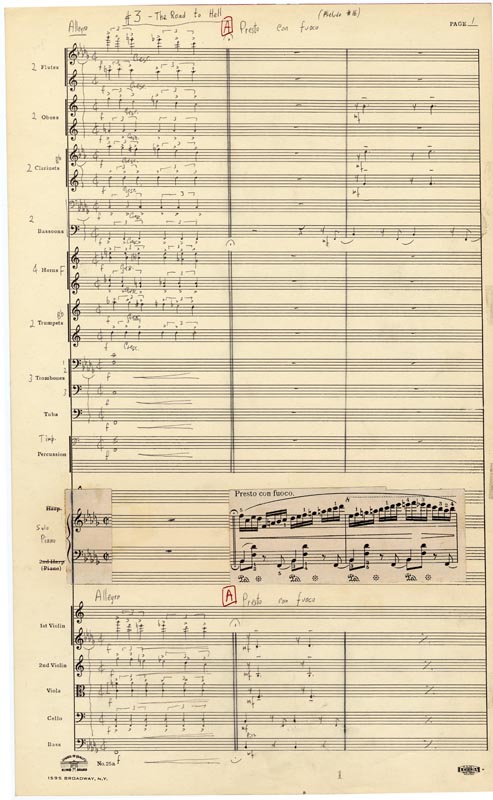Back to Chopin at 200 Home | Exhibit Gallery
Hershy Kay, The Concert
Ballet based on various works of Chopin, 1956
Hershy Kay Papers
Gilmore Music Library

Chopin’s music has been repurposed in many ways, including a ballet, called The Concert, which premiered in 1956 at the New York City Ballet, with choreography by Jerome Robbins. The music consists of a dozen piano pieces by Chopin, arranged for piano and orchestra by Hershy Kay (1919–1981). In the 1956 performances, Nicholas Kopeikine was the piano soloist and Hugo Fiorato the conductor.
In a review of the premiere, New York Times critic John Martin described the ballet as “a kind of nightmarish revue, in which a series of characters maintains the same relationships through an endless sequence of different situations.” He added that “Many of the jokes are corny and Balanchine, Fokine and Robbins himself as choreographers are laid under heavy contribution while they are being kidded. The real victims, however, are Chopin and Mr. Kopeikine. The former, represented in the set by a chaste silhouette, disappears from the scene early, presumably in dudgeon, but Mr. Kopeikine is called upon to sit there and play with complete integrity through all the mayhem.” The New York City Ballet revived The Concert in 1983 and again in 2008–2009.
We have chosen to display a page from the third movement, entitled “The Road to Hell.” It is based on Chopin’s Prelude No. 16 in B-flat minor. Hershy Kay’s manuscript is unusual. In several of the movements, he used Chopin’s music verbatim, while adding his own accompaniments, introductions, interludes, and postludes in the orchestra. To save himself the trouble of notating what Chopin had already composed, he simply cut out the staves from published editions and pasted them into his own manuscript. After 54 years, the adhesive has decayed, and many of the paste-ins have come loose. Following this exhibit, the staff of Yale’s Special Collections Conservation team will repair each page, so future generations of researchers can safely examine Kay’s manuscript.
In addition to this ballet, our exhibit includes two songs inspired by Chopin’s music. It is worth noting that the story of Chopin’s life—suitably enhanced, of course—has also inspired works in other genres. These include Giacomo Orefice’s opera Chopin (1901), the films A Song to Remember (1945, with Cornel Wilde) and Impromptu (1991, with Hugh Grant), and novels in Polish, French, English, and Italian. Certain aspects of Chopin's biography—his roots in oppressed Poland, his famous friends, his relationship with the colorful George Sand, and his tragic early death from consumption—lend themselves to fictionalization.
